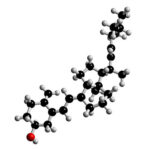 Researchers at Jikei University School of Medicine Minato-ku in Tokyo studied 167 schoolchildren from December 2008 through March 2009.
Researchers at Jikei University School of Medicine Minato-ku in Tokyo studied 167 schoolchildren from December 2008 through March 2009.
It’s an important study that advances our knowledge of vitamin D and it’s contribution to health.
First, the details.
- The response to taking vitamin D(3) supplements (1200 IU/day) was compared with placebo in 167 schoolchildren.
- The researchers recorded the incidence of influenza A, diagnosed with influenza antigen testing using a nasopharyngeal swab specimen.
- Neither the patients nor researchers knew the treatment given — double blind.
And, the results.
- Influenza A occurred in 11% children taking vitamin D(3) vs 19% of those taking placebo — a significant difference.
- The reduction in influenza A was significantly more prominent in children who had not been taking other vitamin D supplements and who started nursery school after age 3 years.
- In children with a diagnosis of asthma, attacks occurred in 2 children receiving vitamin D(3) vs 12 receiving placebo – a significant difference.
The bottom line?
The authors concluded, “Vitamin D(3) supplementation during the winter may reduce the incidence of influenza A, especially in specific subgroups of schoolchildren.”
What’s important, aside from the authors’ conclusion, is the dose of vitamin D given to the children and the fact that the children were followed in real time.
Last year round this time, researchers from Denver, Colorado and Boston, Massachusetts concluded that based on a retrospective review, people with the lowest vitamin D blood levels were at risk of respiratory tract infection.
This study is a logical follow-up that supports that conclusion.
The secondary finding that asthma is more severe in children with vitamin D deficiency also supports other recent studies here and here.
4/10/10 15:02 JR